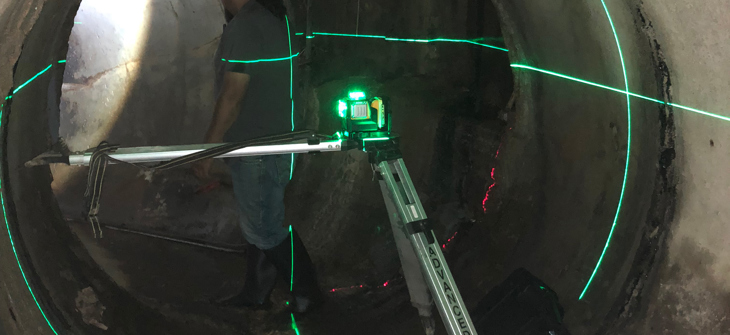
Condition Assessment Options for Reline
Concerns When Sliplining
One of the largest concerns municipalities have when sliplining an existing pipe structure is if the liner pipe will fit inside the host pipe. There are a myriad of potential host pipe problems which determine liner pipe clearance: misaligned joints, out of roundness, protruding laterals, long radius curves, elbows, or pipeline breaks/deflections. These unforeseen complications are what rob designers of their slumber, creating nightmares of contractors onsite with pipe which will not fit.
Situations like this are avoidable, primarily by improved planning early in the condition assessment phase.
Contech doesn’t perform condition assessments on existing pipelines, but we are frequently asked about required information necessary to determine if one of our solutions will fit. Below are three of the primary inspection methods used to determine pipe conditions: visual inspection, closed circuit television video, and laser profiling.
- Visual inspections are the most economical way to survey the condition of a pipe. For visual inspection to be a valid option, the pipe should be 48” and larger, straight, and relatively short. Since most storm and sanitary sewers require confined space entry, visual inspection is mostly used for open ended culverts. The inspection is usually completed by municipality maintenance crews when the project is being designed and by the contractor to verify the measurements. Measurements are taken at pre-determined intervals and where the crew notices a potential problem. The measurements provide the minimum inside dimension of the host pipe is determined. From there, the maximum outside dimension of the liner pipe can be determined. Smaller culverts can be visually inspected from each end of the culvert, but the pipe would need to be straight and shorter to make sure potential problems can be identified. If the crew is good at taking measurements, determination of vertical and horizontal angles in the pipe can be made. Overall, culverts with multiple curves/angles, or closed end pipes should use a different form of inspection.
- Closed Circuit Television Video (CCTV) is the next step in pipe inspection. A small cart outfitted with cameras is operated remotely. The work is typically done by specialized contractors, although some municipalities have their own CCTV equipment and crews. Because of the required equipment and specialized crews, it is more expensive than visual inspections. CCTV works great in small and larger diameter host pipes and enclosed systems such as storm sewer and sanitary sewers. Locations of existing conditions such as laterals, misaligned joints, pipeline deflections and alignment curves can be determined. While these trouble spots can be located, determining the degree of the trouble spot can still be challenging.
- Laser profiling of existing pipe provides what I refer to as the “no doubt” fit. Like CCTV, a small cart is used to travel through the host pipe. In this case, the cart is outfitted with laser emitters which locates and measures all deflections, protrusions, elbows, etc. Special contractors perform the work, and it is more expensive than CCTV. But the payoff is enormous – plotting all the known points provides the designer with an exact model of the existing pipe. They can then model the liner pipe and make sure it fits through the host pipe long before liner material is purchased. The primary drawback of laser profiling is that the laser does not penetrate water, meaning invert information could be tricky to locate. To overcome that, try to laser profile in low flow conditions. While generally overkill for culverts, laser profiling is ideal for any pipe with multiple elbows, deflections, and other pinch points.
Determining which inspection method to use depends on factors such as pipe use, diameter, pipeline layout, existing conditions, and budget. From a pipe manufacturer’s perspective, the more information we have, the better off we will be.
One last comment, the safety of all our crew is of the utmost importance. When inspecting any type of pipes, make sure you take all precautions and follow OSHA guidelines.
